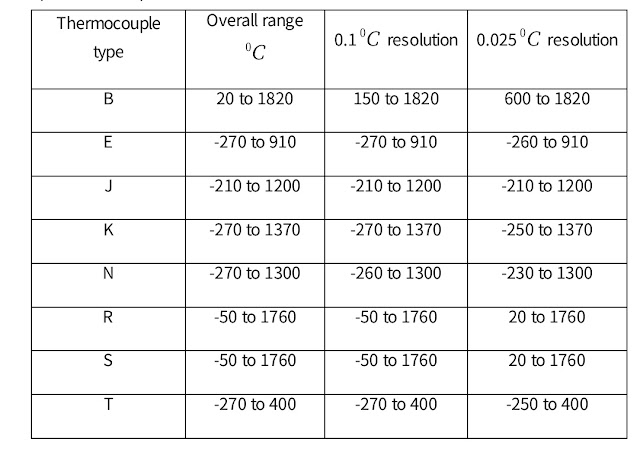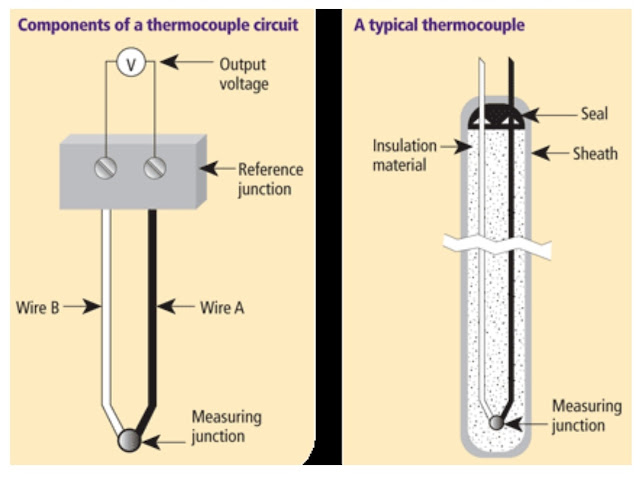Thermocouple sensor
Origin of the name thermocouple
Derived from the word "Thermo" which means heat energy and "Couple" which means the meeting of two objects. A thermocouple is a temperature active transducer composed of two dissimilar metals with a reading point at the junction of the two metals and the other point as the output.
Thermocouple is one of the most commonly used sensors to measure temperature because it is relatively inexpensive but accurate and can operate in both hot and cold temperatures.
History of thermocouples
Seebeck Effect
 |
| The phenomenon of thermoelectricity was first discovered in 1821 by the German scientist, Thomas Johann Seebeck. It connects copper and iron in a circuit. |
Between the two metals, a compass needle is then placed. When the metal side is heated, the compass needle moves. It was later discovered that this happens because the electric current that occurs in the metal creates a magnetic field.
This magnetic field is what moves the compass needle. This phenomenon became known as the Seebeck effect.
The output of the thermocouple temperature sensor is a voltage in milli Volts. Here are some types of thermocouple behavior and characteristics.
 |
| Picture. Behavior of some types of thermocouple |
Peltier Effect
Seebeck's discovery inspired Jean Charles Peltier to see the opposite of the phenomenon. He applied electricity to two pieces of metal glued together in a circuit.
When an electric current is applied, heat is absorbed at the junction of the two metals and heat is released at the other connection. This heat release and absorption reverse each other once the direction of the current is reversed.
This type is the oldest type, whose construction consists of a glass tube that has a small capillary tube filled with a vacuum and this liquid is usually mercury. Changes in heat cause changes in the expansion of the liquid or known as temperature to volume change then volumetric change to level simultaneously.
This level change represents a change in heat or temperature, the accuracy of this type depends on the design or accuracy of the tube, as well as its insulation. Another method of this type is to use a gas tube filled with gas connected to a capillary tube protected by a spiral to the bourdon spiral which is used to move the pivot, then move the pointer.
 |
| Data specification of the type of thermocouple. |


